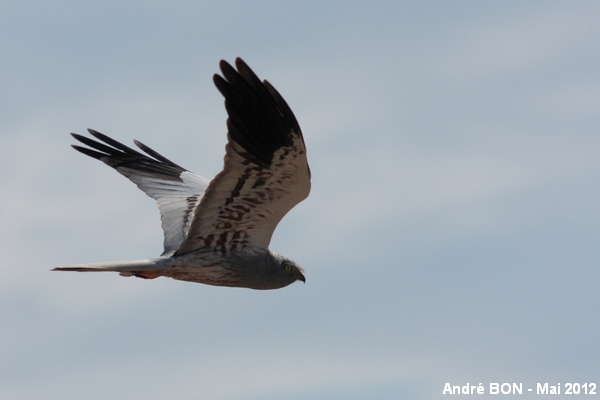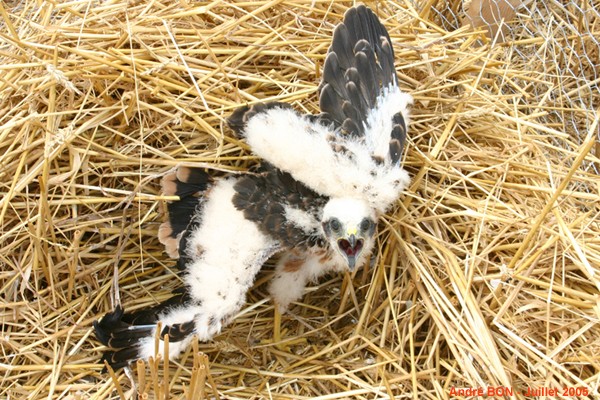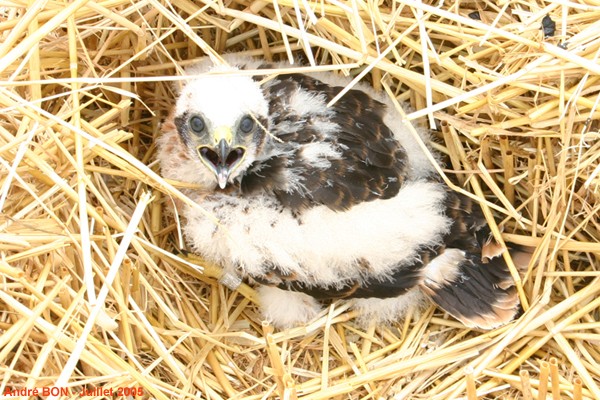


| Montagu's Harrier (Circus pygargus (Linnaeus, 1758)) |



|
|
Scientific name: Circus pygargus (Linnaeus, 1758) Common name: Montagu's Harrier French name: Busard cendré, Baron gris Order: Accipitriformes Family: Accipitridae Size: 43 10 50 cm; Wingspan : 98 to 110 cm; Weight : Female : 300 to 450 g ; Male : 225 to 300 g. Habitat: Open areas like steppes, heaths, meadows, crop fields. Food: Small mammals (voles, field mice), small birds on the ground, lizards and big insects. Nesting: In May-June females lay 3 to 5 eggs in a small size nest. It is located on the ground in grassland or in a cereal field. Juveniles will start to fly after 35 or 40 days. Migration: The Montagu's harrier migrates in autumn to the South of the Sahara or to southern Asia. Geographic area: From April to September, the breeding area includes all Europe to western Siberia, except Scandinavia, the Balkans and a part of Central Europe. |
The Montagu's Harrier is the smaller of the four European harriers. Males are ashy grey, darker than Hen Harriers. Seen from below while flying, you can distinguish two dark stripes under the secondary feathers when only one can be seen on the upper side. The tip of the wing is totally black. Females and immature birds have a bright reddish-brown under side. The upper side is brown and crossed by black lines. The rump is whitish, the tail shows several cross lines. |
| [To know more about the Montagu's Harrier] [Next picture] [Top] |

|
This male Montagu's Harrier was hunting with its low and slow flight. It was moving parallel to the small country road on which I was driving. I accelerated to be some distance ahead, then I stopped and I have been able to take a picture as it arrived on my side. There is some shadow on the eye but as I never make any local processing on my pictures I will have to wait for another opportunity to try to shoot a better picture. However I am rather happy with this picture as you can clearly see the dark stripes on the under side of the secondary feathers. |
| [To know more about the Montagu's Harrier] [Next picture] [Previous picture] [Top] |

|
The harvester is going to make mincemeat of the harrier's chicks in their nest. An amateur ornithologist, who has located the nest by seeing Harrier adults coming and going, picks the chicks before the machine passes. Then he puts them back on a straw bed at the same location. They are protected from predators by a wire fencing. Adult Harriers continue to feed the brood. You can consider that the young birds are saved when they fly away from the nest. |
| [To know more about the Montagu's Harrier] [Previous picture] [Top] |

|
There were two Harrier chicks in this nest. Here is the smaller one. Looking carefully, you will see the ring the ornithologist put on the leg. I just stand next to the nest a couple of seconds. |